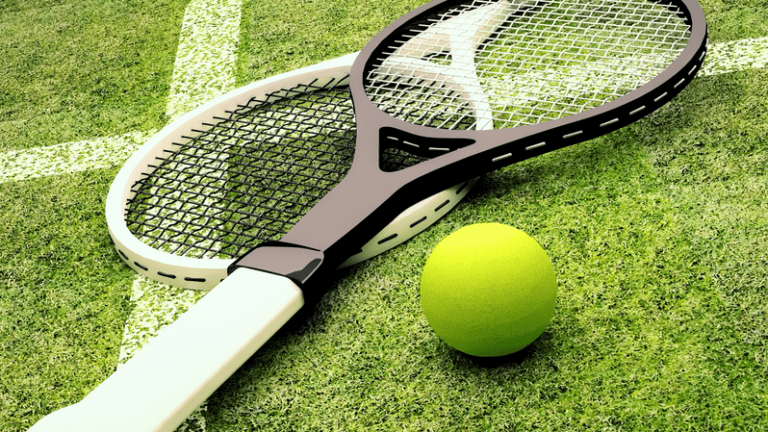Professional tennis players make the adjustment from clay to grass courts seem easy by playing in the French Open and Wimbledon in consecutive months. For the average tennis player, however, adjusting to a grass tennis court can be a very difficult task. Young tennis players usually compete on clay and hard courts, but some youth tennis matches are held on grass courts. These matches create an interesting challenge for young players, because the tennis ball moves differently on grass. If you ever find yourself playing on a grass court, whether it be tournament play or a rally with a friend, make sure you know what to expect. Here is a list of the traits of grass courts and tennis tips that will help you play on the them:
Speed: To adjust to the pace of grass courts, players need to understand the timing and bounce of the ball. Similar to hard courts, the ball moves very quickly off the bounce. However, instead of the high bounces typical of hard courts, the ball seems to skid off the grass. The tennis ball usually stays low after bouncing, but travels further before bouncing a second time. To compensate for the speed change, you should meet the ball with your racket low to the ground and start your swings earlier. Matches on grass courts are usually shorter than those on clay because of the increased speed. Capitalize on the rapid ball movement by using powerful serves. With less time to react, your opponents will be forced to use defensive returns. These returns will give you the chance to take control of more points and come to the net more often.
Slice: Slicing the ball is much more effective on grass than any other type of court. The tennis ball bounces lower with any type of shot, but good sliced shots barely come off the ground at all. The best times to utilize the slice is when you are at net or serving. At net, these shots will give your opponents little chance to get to the ball before double bounces, and powerful slice serves can make service returns even more difficult.
Predictability: Part of the reason grass courts are less common than clay and hard courts is the endless amount of work that goes into their upkeep. If you watch Wimbledon, you can see how each tennis court changes from a pristine field into a mess of dirt and grass as the tournament progresses. Keep in mind that these are the nicest grass courts on the planet. When you play on a grass court, you have to be prepared for divots and bumps that can affect any bounce. Stay on your toes and be ready for anything.
Knowing what to expect before you play on a grass court is part of the battle, but practicing one is the best way to adjust. Tennis is a mental game. If you stay confident and adaptable you can learn to dominate the grass court.
How useful was this post?
Click on a star to rate it!
Average rating 5 / 5. Vote count: 4
No votes so far! Be the first to rate this post.




